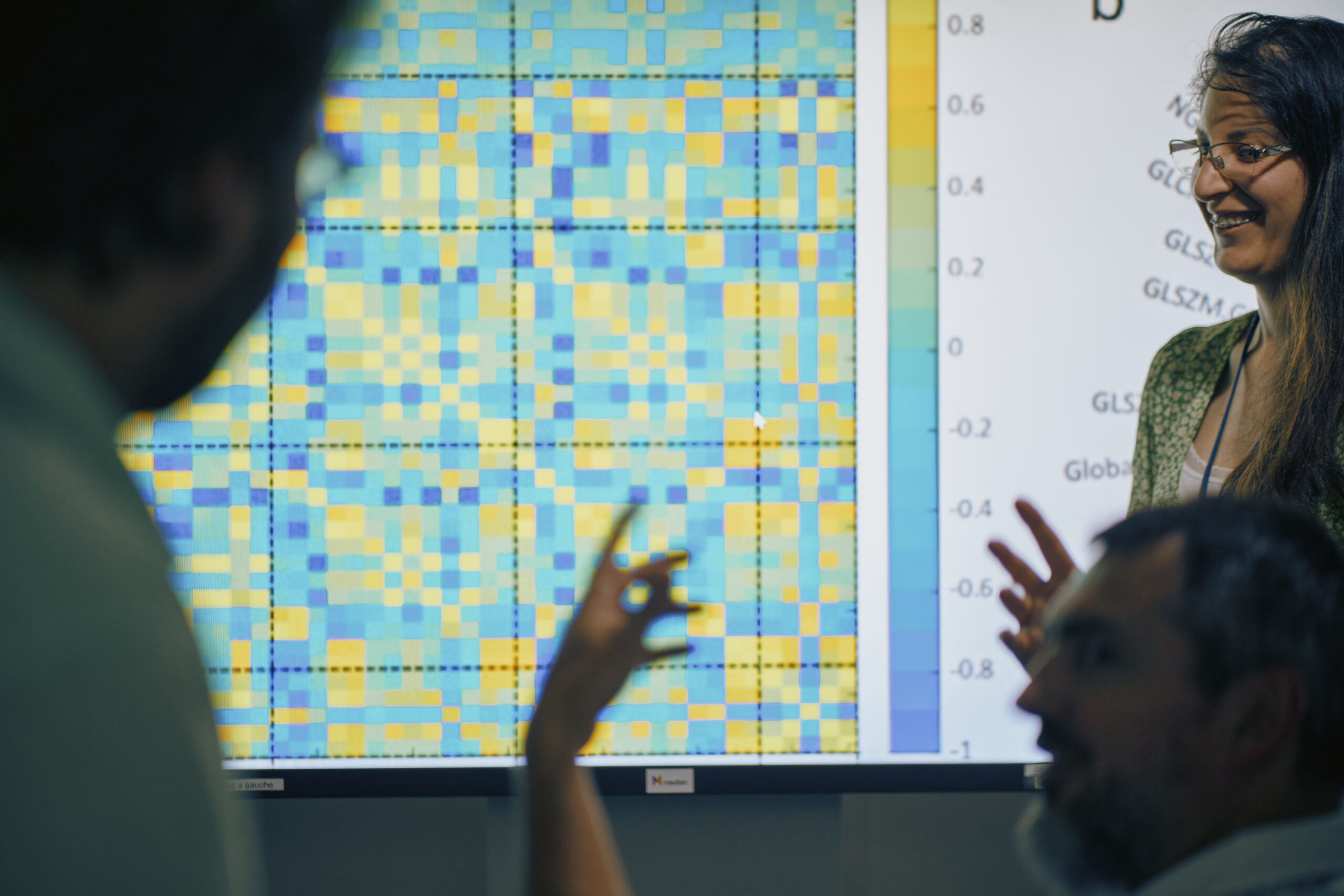
Our latest podcast episode is here! Our podcast series uncovers insights from the imaging experts at Median Technologies, focusing on various topics related to medical imaging in oncology clinical trials. Our aim is to help you stay ahead of the curve in the ever-evolving field of oncology trials.
We recently recorded a conversation with Fadila Zerka, Clinical Research Scientist at Median Technologies. Hosted by Connor Anderson, U.S. Project Manager II at Median Technologies, the discussion was about the transformative potential of radiomics in medical imaging and clinical trials.
Fadila is an expert in this field with six years of experience. Her research interests are centered around the application of Radiomics in AI, to build new, innovative imaging biomarkers.
In this podcast episode, Fadila shared her insights on how this cutting-edge technology is revolutionizing the way we approach diagnosis and treatment planning.
They delved into the intricate process of extracting quantitative data from medical images and how these radiomic features can provide a more objective and detailed understanding of diseases such as cancer.
The conversation also touched on the integration of artificial intelligence in radiomics, highlighting its role in enhancing the accuracy and efficiency of image analysis. With a focus on practical applications and future advancements, this discussion offers a deep dive into the emerging field of radiomics and its impact on precision medicine.
Reach out to us to learn more about how you can work with Median on radiomics.
This is an excerpt from our podcast “Decoding Radiomics: The Future of Medical Imaging powered by AI”.
Connor ANDERSON
Today we are diving into the world of radiomics. Joining me today is Fadila Zerka, so welcome Fadila.
Fadila ZERKA
Thank you, Connor.
Pleasure to be here today.
Connor ANDERSON
Yes, and thank you.
Just to start off with kind of a basic question, since Radiomics is an evolving field of research, but what exactly is radiomics?
Can you touch upon that a little bit?
Fadila ZERKA
Sure, I’ll explain. Radiomics involves extracting quantitative information from medical or other types of imaging, such as CT, PET, or MRI. This can be done using each type of imaging individually or through a joint extraction process. For instance, you can register PET and CT images together and then extract radiomic data from the combined images.
What does this mean?
Radiomics identifies complex patterns and information that are not visible to the human eye by applying mathematical equations to the pixels or voxels of the images. This quantifies various aspects of the image, such as the intensity or shape of a region of interest, which could be an organ or a tumor.
We also use radiomics to quantify the texture information of specific regions, either considering the region as a whole or its subregions. This process reduces the subjectivity inherent in human analysis. For example, different doctors might have varying opinions when looking at a tumor, but using mathematical equations ensures consistent information extraction. This consistency is a significant advantage of radiomics.
Want to know more about Median’s AI-powered imaging services for oncology trials? Click here!
